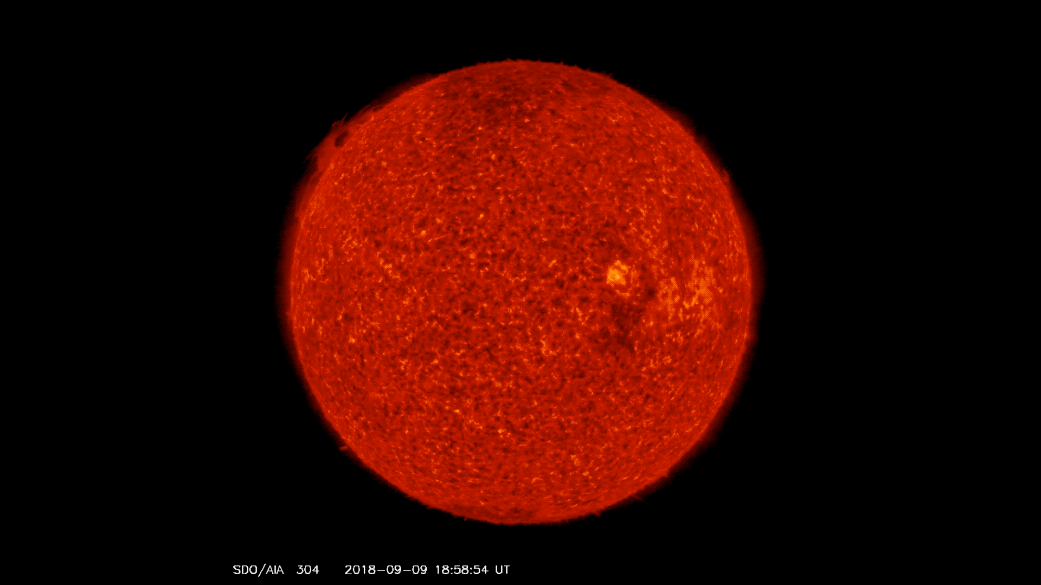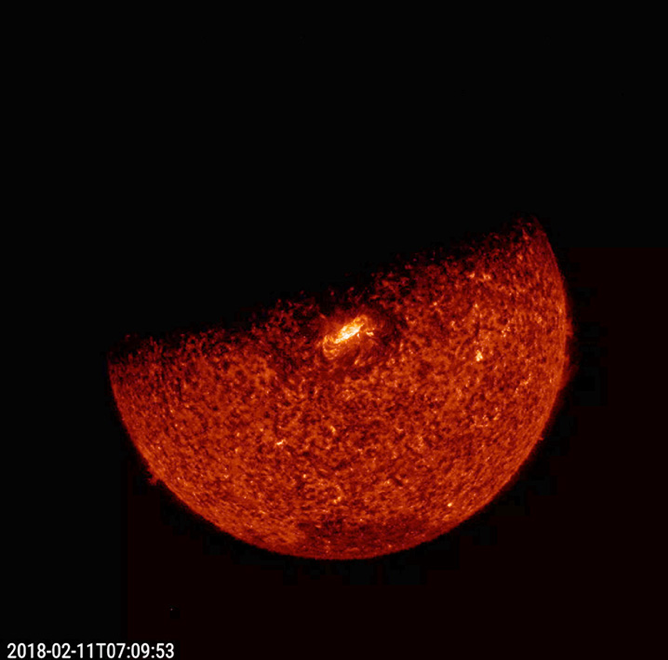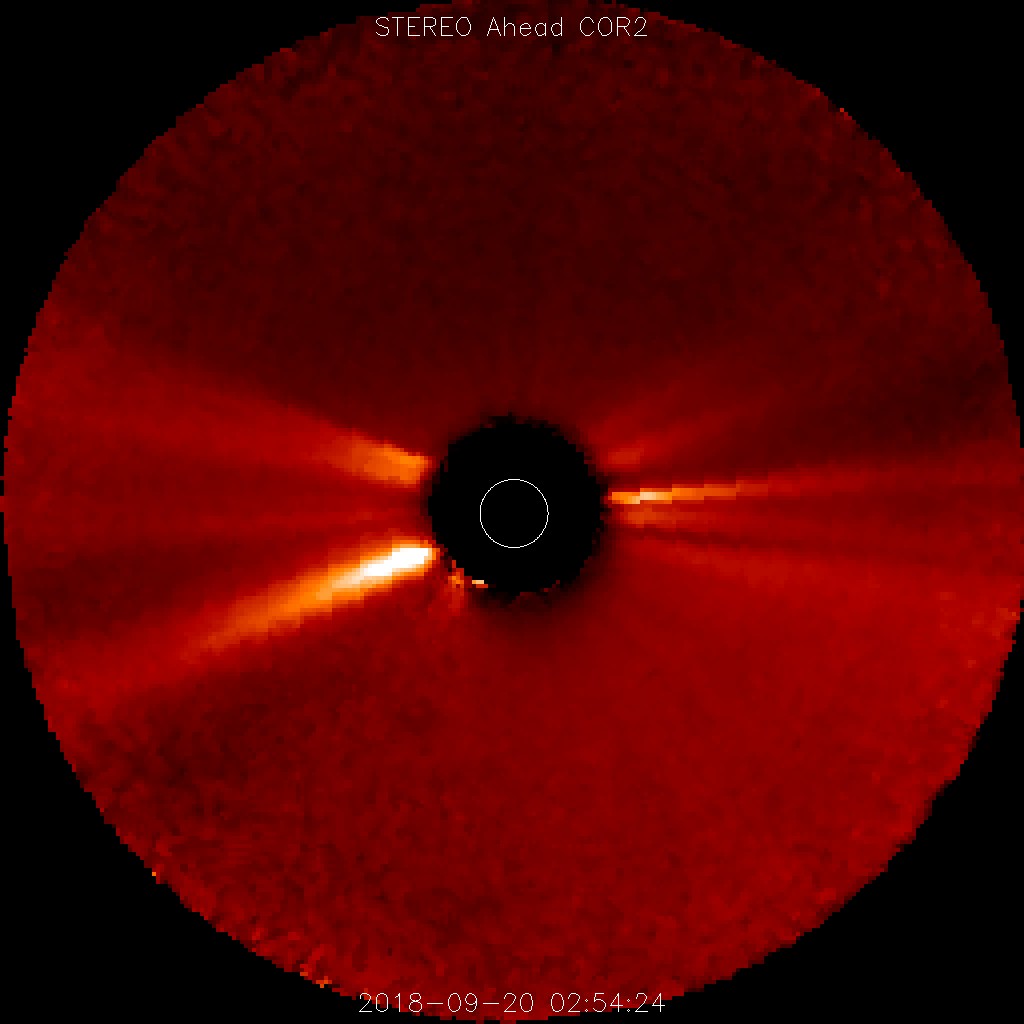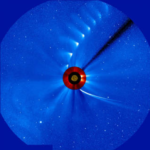By Mara Johnson-Groh
NASA’s Goddard Space Flight Center
Recently, NASA’s Magnetospheric Multiscale mission — MMS — was in just the right place at the right time to observe a new kind of turbulent particle jet in near-Earth space.
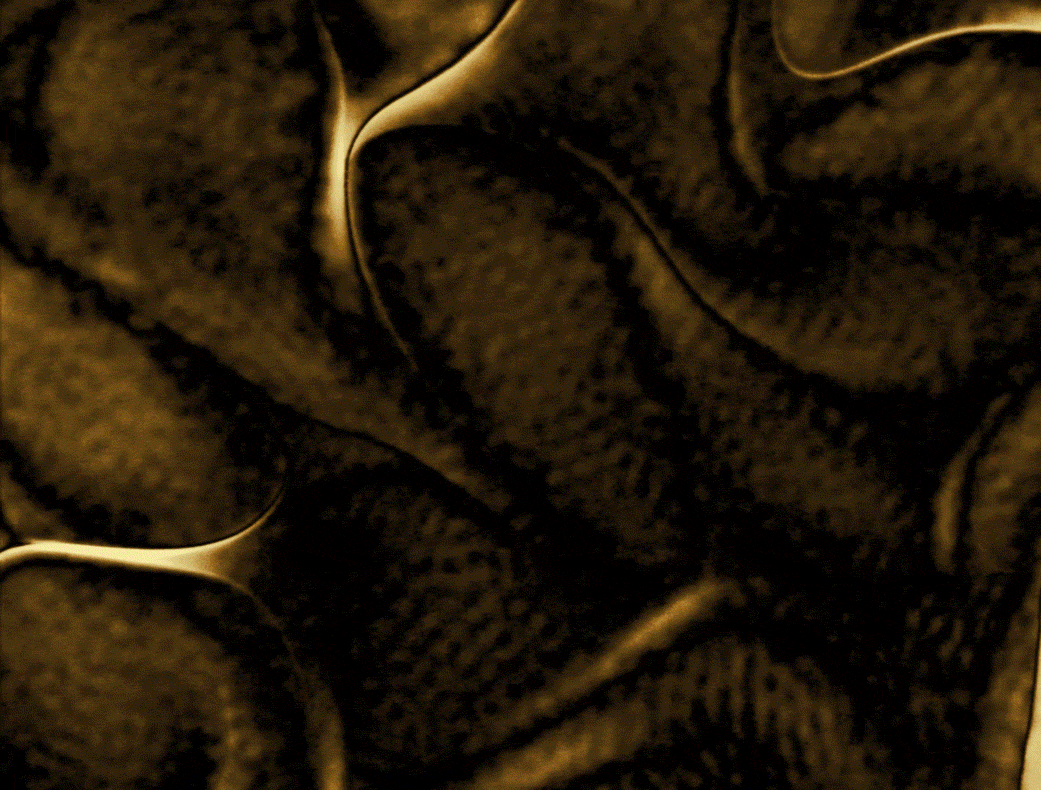
The particle jet streamed from a particularly turbulent region called the magnetosheath, just outside the outer boundary of the Earth’s magnetic environment. It was the product of a magnetic reconnection event — an explosive process in which magnetic field lines cross and snap, flinging away nearby particles at high speeds.
MMS is the peregrine falcon of spacecraft studying Earth’s magnetic field. Its instruments were designed to capture data at speeds a hundred times faster than previous missions. Most of the time, this allows MMS to study magnetic reconnection in great detail. The fast measurements, combined with MMS’s unique flying formation— four identical spacecraft flying in a pyramid — allows us to observe phenomena no one has seen before in 3D.
But this reconnection event was special: the particles it sprayed out came so quickly, and in such small doses, that researchers had to invent a new method to be able to detect them. Here’s how it works.
MMS detects particles using its Fast Plasma Investigation instrument, or FPI. Similar instruments on previous missions were designed to take advantage of the spacecraft’s spinning to gather measurements with one sensor as it swept a 360 degree view, much like a lighthouse beacon surveys the sea. FPI, however, uses eight spaced-out sensors to capture electrons and ions streaming in from all directions simultaneously, regardless of how fast the instrument is spinning. Each sensor has a “deflector” which allows it to sample particles coming from four different directions (labeled 0 through 3 in the figure below). This allows it to take much faster measurements of the full sky, completing a cycle through each of the deflector angles every 30 milliseconds.

But for the recent particle jet, FPI’s cutting-edge speed is still too slow; It lasted just 45 milliseconds so MMS could only gather one data point during the entire event. They needed more data.
So Amy Rager, a graduate student at NASA’s Goddard Space Flight Center in Greenbelt, Maryland, and her MMS colleagues came up with a new technique to help them analyze this briefer-than-brief event. Rager’s idea was to look at one deflector angle at a time instead of pooling them together. For each angle Rager separately interpolated the data — essentially reading between the lines and connecting the dots to gather extra data points. This allowed for measurements just 7.5 milliseconds long! The resolution of the data was reduced, since they were only looking at a fourth of the data as before, but it allowed the scientists to understand what was going on in these fleeting, action-packed moments.

With the new method, the MMS scientists are hopeful they can comb back through existing datasets to find more of these events, and potentially other unexpected discoveries as well. The method may also help scientists and engineers develop faster instruments with more deflector angles in the future.


